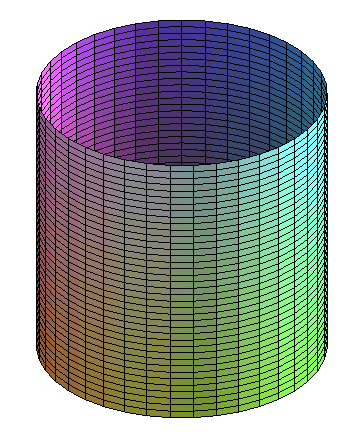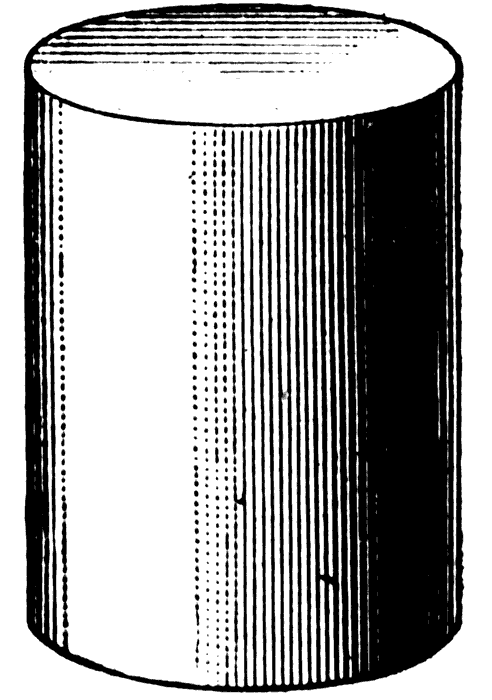 |
American Literature: Romanticism research assignment Student Research Submissions 2015 Research Journal |
 |
Heather Minette Schutmaat
12
May 2015
An Exploration of the Sublime
Introduction: Experiencing the Sublime
My
fascination with the sublime derived from recalling moments in my own life when
I experienced this curious, mystifying mixture of emotions, of both beauty and
terror, of both pleasure and pain. The first time I encountered the phenomenon,
I was twenty years old and standing on a mountaintop on La Costa Brava of Spain.
From my vantage point, I could see France standing gently to the left, and
mountains sweeping lavishly to the right. Ahead of me the brilliant blue of the
Mediterranean Sea rolled out endlessly in the light of a sinking sun, and I felt
so overwhelmed by such powerful, almost forceful, beauty that I found it
difficult to breathe. My surroundings, the mountains and sea and sky, were
literally breathtaking, and so beautiful that my heart galloped and my entire
body trembled. All at once I felt both euphoric and absolutely terrified.
Returning to my flat in Barcelona that evening, I wrote of my experience: “It
was as though, in one single moment, I felt everything. All the joy and sadness
of my entire life returned in an instant and ran throughout my whole body,” “I
felt so big, as if I could reach the sky or sing or laugh and God could hear me,
but I also felt so small and invisible in its immensity. I was both gigantic,
embracing the entire world, and the tiniest speck, floating through the
boundless sky.”
I
contemplated this moment for a long time ahead, doubting I would experience
anything like it again, until the day my son was born. There is truly no high in
the human experience like seeing your child for the first time. The feeling I
experienced when witnessing the beauty of the Mediterranean, the sight of
France, the rolling mountains along the coast, and the colors of a Spanish sky,
were multiplied infinitely the moment I saw Jude. Upon seeing his round eyes
like perfect spheres of light, the way he moved as if still in water, was the
most exhilarating moment I have experienced. I’ve often heard parents refer to
the births of their children as “pure joy,” and while it was undoubtedly the
most joyous and beautiful moment of my life, it was also the most terrifying.
I’ll never forget the way my overwhelming love for my newborn child, the kind of
love I never knew until I became a mother, manifested itself as a physical pain
in my chest, as a feeling of terror.
Whatever it was that happened within me during these moments, on the mountaintop
in Spain and on the day my son was born, was something I’ve never been able to
sufficiently explain. I’ve often written about moments of pleasure and pain in
my poetry, although on a smaller scale, such as the sight of the vast fields of
sunflowers between Pisa and Florence framed by a train window so scenic it hurt,
or the echo of church bells in Florence dancing through the streets so beautiful
and thrilling and anxiety inducing, and moments of mindfulness when I’ve studied
my child, the way he moves in a moment of play, the way the sun follows him and
lights his being, and I feel my love for him to such an extent that my body
somehow processes it as a profound sadness or fear. I’ve always been so
fascinated by these moments, yet remained focused on their ineffability, once
referring to it as “the gap between feelings and language that I cannot fill.”
While I could describe, I could never define the combination of joy and fear
that I had simultaneously experienced. That is, until I began studying
literature and discovered that there is literary term for these moments of
beauty and terror: All this time, what I have been experiencing is “the
sublime.”
With
this newfound fascination with the sublime, I became interested in discovering
the origins of the concept of the sublime, in what genre the sublime is the most
prominent, and where the sublime still thrives today in other forms of art.
The
Origin of the Sublime & The Sublime and Romantic Poetry
According to all the encyclopedias of philosophy and literature that I
used in my research, such as Bloomsbury
Guide to Human Thought, “the term Sublime (Latin, ‘what is under the
threshold [of experience]’ was first named by the literary critic Longinus.”
Encyclopedia of Philosophy states
that Longinus first theorized the sublime in his work “On
the Sublime, written in the first century CE,” and also asserts “Longinus
conceives sublimity as a quality of elevated prose of great rhetorical power.”
It wasn’t until the seventeenth century that the sublime became linked to
natural phenomena, and later with incomprehensible excesses of natural force. In
1757, philosopher Edmund Burke, in his work
A Philosophical Enquiry into the Origin
of Our ideas of the Sublime and the Beautiful, “provided an empiricist
account of kinds of objects and situations that induce sublime perceptual
experiences. Where beauty is found for Burke in things, the perception of which
seems to harmonize with human sensory capacities, the sublime object of
perception challenges our senses or exceeds our perceptual grasp” (Encyclopedia
of Philosophy). The concept of the sublime was also taken up by philosopher
Immanuel Kant in 1790 who described the sublime, in his work
The Critique of Judgment, as a
“feeling of humanity confronted with something of limitless power” and he
defined sublime qualities “those which transcend understanding” (Bloomsbury
Guide to Human Thought).
Bloomsbury Guide to Human Thoughts
explains that the sublime “had an enormous currency among 18th-Century
European thinkers and influenced the arts, philosophy, and politics” and it also
had “a crucial effect on the rise of Romanticism in the arts” because “such
ideas were the antithesis of scientific rationalism” and “helped to create
a standoff between science and the arts which did not exist until the 18th
century, but which has, some say, been prevalent ever since.” As the
Handbook of Romanticism Studies sums
up, “in the Romantic period, between about 1760 and 1830, the sublime was an
aesthetic, philosophical, and psychological term vigorously debated in
intellectual and artistic circles, where it was used to describe the grandeur of
religious, literary, and visual experiences” (55).
Therefore, the origin of the sublime can be traced back to Longinus who
first named the sublime, and was a major subject of discourse, or “had an
enormous currency,” among 18th-century thinkers, and the concept
played a crucial role in the rise of Romanticism in the arts, and has been an
important concept ever since. What I have found particularly interesting in my
research in the history of the sublime is the important role that the sublime
played in Romantic Poetry in particular. For example, the
Handbook of Romanticism Studies
states, “Scholars of the period consider the sublime to be a particularly
Romantic aesthetic or poetic commonplace, as so much poetry of the Romantic
period asks its readers to believe that poetry is at the same time immortal yet
insufficient to express the very things it means to say. This theme of
inexpressibility is also common in Romantic poetry, and is grounded in the
sublime” (56).
As I had anticipated, I found that the sublime is the most prominent in
Romantic Poetry. I also discovered that the most notable romantic poet working
with the sublime was William Wordsworth. Perhaps the relationship between poetry
and the sublime has intrigued me the way that it has because it further
establishes my belief in poetry as an effective translator of otherwise
inexpressible feelings. In other words, the sublime “transcends or overwhelms
human perception or expression” and is characterized by “incomprehensible
excesses of natural force,” but poetry somehow has the capacity to express and
make comprehensible feelings associated with the sublime by bringing out a
powerful mixture of pleasure and pain in its readers. I believe this holds true
not only with poetry, but also with other powerful forms of art that don’t
directly express the sublime, but indicate beauty and terror, or evoke pleasure
and pain.
The
Sublime in Contemporary Photography
After
taking note of the immense presence of imagery in poetry we’ve read throughout
the semester that depicts the sublime, and after viewing the Romantic paintings
of Caspar David Friedrich, J. M. W.
Turner, and Asher B. Durand that powerfully display the sublime, I became
interested in discovering to what extent the sublime persists in contemporary
visual arts. In my research, I can came across an incredibly useful website,
tate.org, that categorizes and exemplifies the sublime in different eras and in
different schools of art, as well as demonstrates how the concept of the sublime
has changed over time. I discovered through this site that the embodiment of
beauty and terror, and the aura of pleasure and pain still exist widely in
contemporary visuals arts.
However, the images I chose to feature in this project to exemplify the sublime in contemporary photography are images from the series Grays the Mountain Sends by the internationally renowned, award-winning photographer Bryan Schutmaat, a.k.a. my big brother. Schutmaat states:
Grays the Mountain Sends combines portraits, landscapes, and still lifes in a series of photos that explores the lives of working people residing in small mountain towns and mining communities in the American West. Equipped with a large format view camera, and inspired by the poetry of Richard Hugo, I’ve aimed to hint at narratives and relay the experiences of strangers met in settings that spur my own emotions. Ultimately, this body of work is a meditation on small town life, the landscape, and more importantly, the inner landscapes of common men.
While Schutmaat’s objective wasn’t to capture the sublime, his poetic images
certainly, and uniquely, combine beauty with terror on an elevated scale, and
the experience of viewing his photographs brings on a powerful mixture of both
pleasure and pain.
Similar to the paintings of the Romantic Era that are both haunting and
beautiful, many of Schutmaat’s photographs, like the following, display the
overwhelming beauty of American landscapes, while simultaneously inducing
feelings of anxiety and dread.

In the following photograph, Schutmaat captures the notion of the
incomprehensible, awe-inspiring excesses of natural force that is often
associated with the sublime.

In many other photographs, like the following, tragedy stands at the forefront
of the image, inducing trepidation. Reminiscent of Sylvia Plath’s poetry, in
many of Schutmaat’s photographs, catastrophe, heartbreak, or pain takes lead.
However, they also evoke something overwhelmingly beautiful. Whether we find
this beauty in our tenderness toward the inhabitants of the land Schutmaat
photographs, or through the presence of the calm, natural landscape juxtaposed
with catastrophe, his images embody both an overpowering sadness and a profound
beauty, and consequently exemplify the sublime.

One of the most captivating and unique features of Schutmaat’s work, which sets
him apart from other contemporary photographers of the sublime, is his ability
to capture the sublime in portraits. While most contemporary photographers of
the sublime rely exclusively on landscape to convey the sublime, Schutmaat also
depicts the sublime by situating his subjects within natural, sublime settings.
In the following image, Schutmaat evokes both beauty and sadness, and pleasure
and pain, not only through the natural setting, but also through the body
language and expression of his subject.

In my
exploration of the sublime, I discovered the origins of the sublime and its
importance to Romantic Poetry, and how the sublime has persisted after the
Romantic Era and in other forms of art. However, another question I hoped to
answer, as I continually asked myself throughout my research, was whether or not
the sublime was exclusively a natural phenomenon or was something that could be
staged, or artificially created. When reflecting on moments of my own life in
which I experienced the sublime, such as the moment I stood on a mountaintop on
La Costa Brava of Spain or on the day my son was born, I thought of the sublime
as something that happened naturally and unexpectedly, and was a phenomenon
outside our control.
However, I learned in my research that the sublime is more accessible than I had
initially believed. Often times romantic writers, painters, or contemporary
romantic photographers, go in pursuit of the sublime by seeking isolation in the
natural world. That isn’t to say that moments of the sublime can be controlled,
or staged or artificially created, or are even easily attainable, but it is
certainly possible to seek, discover, and experience moments of the sublime. In
short, through my research and hours of contemplation, I’ve come to the
conclusion that we cannot create the sublime, but we can pursue, attain, and
capture and convey the sublime in art.
Works
Cited
Faflak, Joel, and Wright, Julia M., eds. Critical Theory Handbooks : Handbook of
Romanticism Studies. Hoboken, NJ, USA: John Wiley & Sons, 2012. ProQuest ebrary.
Web. 13 May 2015.
Pillow, Kirk E. "Sublime, The." Encyclopedia of Philosophy. Ed. Donald M.
Borchert. 2nd ed. Vol. 9. Detroit: Macmillan Reference USA, 2006. 293-294.
Gale Virtual Reference Library. Web. 13 May 2015.
Schutmaat, Bryan. Grays the Mountain
Sends. New York: Silas Finch, 2013.
"Sublime, The." Bloomsbury Guide to Human Thought. N.p.: Bloomsbury, 1993. Credo Reference. 1 Jan. 2002. Web. 13 May 2015.
|
|
|
|


